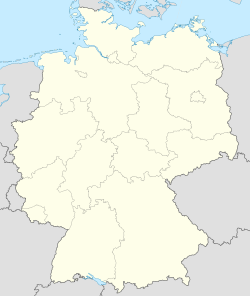Anhalt Castle
| Anhalt Castle | |
|---|---|
| Burg Anhalt | |
| Meisdorf | |
| File:Bergfried anhalt.jpg
Foundation of the keep
|
|
| Coordinates | Lua error in package.lua at line 80: module 'strict' not found. |
| Type | hill castle |
| Code | DE-ST |
| Site information | |
| Condition | Base of the keep, wall remnants |
| Site history | |
| Built | around 1123 |
| Materials | Brick |
| Garrison information | |
| Occupants | counts |
Anhalt Castle (German: Burg Anhalt) is a ruined medieval fortification near Harzgerode, in Saxony-Anhalt, Germany. It stands on the Großer Hausberg, a hill situated between Meisdorf and Mägdesprung above the Selke valley in the Harz Mountains. It was built in around 1123 by Otto the Rich of nearby Ballenstedt. In 1140, the first castle was destroyed during a feud between the Archbishop of Magdeburg and Margrave Conrad of Meissen. The name of the state of Anhalt is derived from this castle.
After 1147, the Ascanian margrave, Albert the Bear, had the castle rebuilt. The new castle was one of the mightiest fortifications in the Harz region and remained occupied until about 1300. The scale of the castle was comparable to that of the Wartburg in Thuringia. The dry moat with its outer rampart (the Vorwall) that surrounded the castle, had a length of 543 metres. Architecturally it is interesting that this castle was built of brick, a material uncharacteristic of its time and the area.
From 1901 to 1907 excavations were carried out on the site of the ruins under the direction of the Brunswick surveyor, Brinckmann. All that remains of the castle today are a few wall sections from the chapel, living quarters and outbuildings, and the base of the bergfried, which is about three metres high.
Hiking
Anhalt Castle (Burgruine Anhalt) is checkpoint no. 197 in the Harzer Wandernadel hiking system.
Sources
- Peter Feist: Burg Anhalt - Der Ort, der dem Land den Namen gab. Kai Homilius Verlag, Berlin 1997, ISBN 3-931121-34-8.
- Lutz Partenheimer: Albrecht der Bär. Gründer der Mark Brandenburg und des Fürstentums Anhalt. 2. Aufl. Köln/Weimar/Vienna 2003, ISBN 3-412-16302-3, p. 78 f., 256 f.
